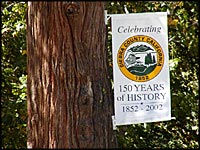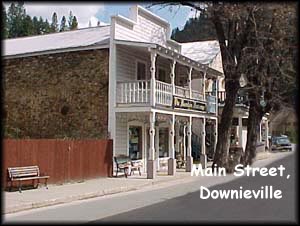

History and Attractions

The Maidu and Washoe Indians are the first known residents of the Sierra Nevada. During the summers, they came into the mountains to hunt and fish. During the fall and winter, they returned to the foothills and valleys below. When gold was discovered, emigration from around the world brought a new cultural era to the region. Mining camps and towns sprung up in Sierra County with each gold discovery. Some towns are just memories, but many still exist today.
Downieville
The County Seat of Sierra County, Downieville is located on Highway 49 at the fork of the North Yuba and Downie Rivers. Gold was discovered here in the summer of 1849. By May 1850, Downieville had 15 hotels and gambling houses, four bakeries and four butcher shops. As the population grew, the town served as a trading center for the Northern Mines. By the mid-1850's, Downieville was California's fifth largest town.

Sierra City
Main Street in Sierra City, nine miles up Highway 49 from Shangri-La, is charmingly narrow and lined with many turn of the century structures, complete with wooden boardwalks. The Masonic Hall, built in 1864, is the oldest building in town.

Museums
The Kentucky Mine, Stamp Mill and Museum are located just east of Sierra City on Highway 49. The museum offers guided tours in the underground mine and also into California's only remaining workable gold ore stamp mill. The museum depicts the gold rush era of Sierra County, life in a mining camp, and the local Native American culture.
The Foundry Museum in Downieville has personal tours available.
Music and Dance
The Kentucky Mine Concert Series plays every Friday evening between the 4th of July and Labor Day, featuring bluegrass, classical, country and comedy under the mountain pines and the stars in the Amphitheater.
For more information on the history and attractions of Sierra County visit the
